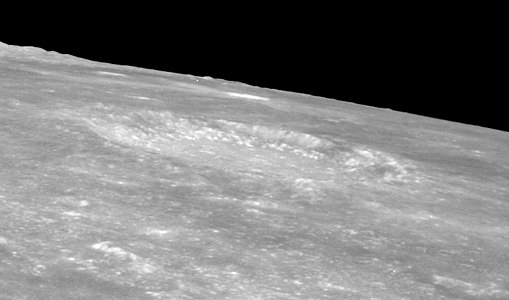Morning of course being a relative term. The most prominent features/craters are Aristoteles the largest crater right of center and above center, Eudoxus below it and just starting to show are yhe outside rims of Aristillus and Autolycus, shown in the lower left region. The walls of Vallis Alpis are also just starting to show and I was hoping to capture the rille that runs down the middle it but I was 1-2 days too early. Some of the smallest craters measure about 1km in diameter. The seeing was above average and the moon was almost directly over me, giving me a fairly rare opportunity for lunar imaging.
For more information and for those interested, I have copied information from Wikipedia.
From Wikipedia, the free encyclopediaAristoteles
 Lunar Orbiter 4
Lunar Orbiter 4 image of Aristoteles (large crater) and Mitchell (smaller one to the right)
Coordinates 50.2°N 17.4°EDiameter
50.2°N 17.4°EDiameter87 km
Depth3.3 km
Colongitude343° at sunrise
EponymAristotleAristoteles is a
lunarimpact crater that lies near the southern edge of the
Mare Frigoris and to the east of the
Montes Alpes mountain range. It was officially named in 1935 after the ancient Greek philosopher
Aristotle by the
International Astronomical Union, using the classical form of his name.
[1]To the immediate south of Aristoteles lies the slightly smaller crater
Eudoxus, and these two form a distinctive pair for a
telescope observer. An arc of mountains between these craters bends to the west before joining the walls. The smaller crater
Mitchell is directly attached to the eastern rim of Aristoteles. To the west is the low, flooded feature
Egede.Observers have noted the crater wall of Aristoteles is slightly distorted into a rounded
hexagon shape. The inner walls are wide and finely
terraced. The outer
ramparts display a generally
radial structure of hillocks through the extensive blanket of
ejecta. The crater floor is uneven and covered in hilly ripples. Aristoteles does possess small central
peaks but they are somewhat offset to the south. The interior floor appears to have been filled with a layer of material partially burying these projections.Aristoteles is a crater of
Eratosthenian age.
[2]
[*]
[*]









Comments